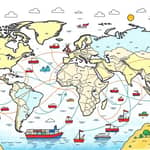
As the world economy evolves, sovereign wealth funds (SWFs) are emerging as powerful agents of change. Armed with a combined asset base exceeding $13 trillion, these state-backed investors are redefining the landscape of global finance by deploying capital directly into strategic sectors. This trend underscores a broader shift: governments seeking more control and transparency while fueling growth and sustainability.
Direct investments allow SWFs to bypass intermediaries, align governance structures, and foster long-term partnerships. The magnitude of this movement is staggering, and its implications ripple across industries, continents, and communities.
From January 2023 to June 2024, SWFs completed 473 direct deals—an uptick of nearly 50 transactions from the preceding period. Even more impressive, deal value nearly doubled to $211 billion, compared to $118 billion previously. These figures reflect robust growth in SWF activity and an unwavering commitment to large-scale partnerships.
In the first half of 2025, deal count moderated to 133 transactions totaling $58.8 billion—levels not seen since 2020. However, average deal size climbed to $450 million per asset. This dynamic shift reveals a strategy centered on fewer, larger transactions in key markets, particularly in infrastructure and private capital arenas.
Notable mega-deals illustrate this trend vividly:
While finance leads in both deal count and value—overtaking technology for the first time in nearly a decade—SWFs are also strategically diversifying into other arenas. Technology, energy, industrial and automotive, healthcare, communications, consumer goods, and agriculture all feature prominently. These top five sectors account for roughly 57% of direct deals, showcasing a balanced approach to growth and resilience.
Geographical allocations are shifting as well. The United States, long the prime destination, saw its share of SWF direct investments fall from 58% to 24%. In parallel, India captured 15% of deals from January 2023 to June 2024—a testament to its expanding market potential. Meanwhile, Africa is attracting targeted, Sustainable Development Goal–aligned investments aimed at bridging development gaps.
Regions driving this evolution include:
SWFs are navigating a complex world of megatrends: climate resilience, digitalization, and deglobalization. They are channeling capital into infrastructure, renewable energy, AI, food security, and agriculture—areas where scale meets societal impact.
Recent data underscores a significant shift toward responsible investing. In 2023, sustainable finance markets swelled by 20% to $7 trillion. Today, 67% of SWFs incorporate the UN Sustainable Development Goals into their decisions, up from 48% in 2022. This strategic pivot reflects alignment with UN Sustainable Development Goals and a drive to generate positive, lasting outcomes.
Investing on a global scale brings inherent risks. Climatic volatility, geopolitical unrest, supply-chain disruptions, and rising populism are reshaping asset selection. To counter these challenges, 75% of SWFs now factor climate risk into their choices (compared to 62% in 2023), underscoring a sophisticated approach to environmental, social, and governance criteria.
Moreover, direct investments empower SWFs to exercise tighter governance control, optimize due diligence, and enhance transparency—benefits not always available through external managers. This structural realignment supports both fiscal objectives and national interests.
As sovereign wealth funds continue to fine-tune their strategies, direct investments will remain at the forefront of their playbooks. By targeting high-impact sectors, diversifying geographies, and embedding ESG principles, SWFs are not only safeguarding national wealth but also championing sustainable progress worldwide.
For policymakers, corporate leaders, and citizens alike, the rise of SWF direct investments offers a window into the future of capital—where public purpose and private performance intersect. The challenge now is to ensure these powerful pools of capital drive inclusive growth, resilience, and shared prosperity in an ever-shifting global landscape.
In the coming years, the world will watch as SWFs leverage their immense resources to tackle climate change, support groundbreaking technologies, and bridge development divides. Their choices will shape economies, nurture industries, and uplift communities, illustrating the transformative potential of well-deployed public capital.
References













